Related Research Articles
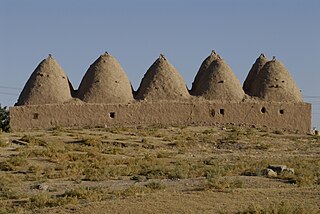
Ḥarrān, also known as Carrhae, was a major ancient city in Upper Mesopotamia whose site is in the modern village of Harran, Turkey, 44 kilometers southeast of Şanlıurfa. The location is in the Harran district of Şanlıurfa Province.
The Arameans were an ancient Semitic-speaking people in the Near East, first recorded in historical sources from the late 12th century BCE. The Aramean homeland was known as the land of Aram, encompassing central regions of modern Syria. At the beginning of the 1st millennium BCE, a number of Aramean states were established throughout the western regions of the ancient Near East. The most notable among them was the Kingdom of Aram-Damascus, that reached its height in the second half of the 9th century BCE, during the reign of king Hazael. A distinctive Aramaic alphabet was also developed and used for writing in the Old Aramaic language.

Aššur (; Sumerian: 𒀭𒊹𒆠 AN.ŠAR2KI, Assyrian cuneiform: Aš-šurKI, "City of God Aššur"; Syriac: ܐܫܘܪ Āšūr; Old Persian 𐎠𐎰𐎢𐎼Aθur, Persian: آشور: Āšūr; Hebrew: אַשּׁוּר, Aššûr, Arabic: اشور), also known as Ashur and Qal'at Sherqat, was the capital of the Old Assyrian Empire (2025–1750 BC), the Middle Assyrian Empire (1365–1050 BC), and for a time, of the Neo-Assyrian Empire (911–608 BC). The remains of the city lie on the western bank of the Tigris River, north of the confluence with its tributary, the Little Zab, in what is now Iraq, more precisely in the al-Shirqat District of the Saladin Governorate.

Raqqa is a city in Syria on the northeast bank of the Euphrates River, about 160 kilometres east of Aleppo. It is located 40 kilometres east of the Tabqa Dam, Syria's largest dam. The Hellenistic, Roman, and Byzantine city and bishopric Callinicum was the capital of the Abbasid Caliphate between 796 and 809, under the reign of Harun al-Rashid. It was also the capital of the Islamic State from 2014 to 2017. With a population of 531,952 based on the 2021 official census, Raqqa is the sixth largest city in Syria.

Richard Nelson Frye was an American scholar of Iranian and Central Asian studies, and Aga Khan Professor Emeritus of Iranian Studies at Harvard University. His professional areas of interest were Iranian philology and the history of Iran and Central Asia before 1000 CE.

Ernst Emil Herzfeld was a German archaeologist and Iranologist.
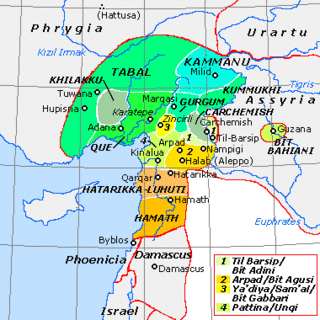
The states that are called Syro-Hittite, Neo-Hittite, or Luwian-Aramean, were Luwian and Aramean regional polities of the Iron Age, situated in southeastern parts of modern Turkey and northwestern parts of modern Syria, known in ancient times as lands of Hatti and Aram. They arose following the collapse of the Hittite New Kingdom in the 12th century BCE, and lasted until they were subdued by the Assyrian Empire in the 8th century BCE. They are grouped together by scholars, on the basis of several cultural criteria, that are recognized as similar and mutually shared between both societies, northern (Luwian) and southern (Aramean). Cultural exchange between those societies is seen as a specific regional phenomena, particularly in light of significant linguistic distinctions between two main regional languages, with Luwian belonging to the Anatolian group of Indo-European languages, and Aramaic belonging to the Northwest Semitic group of Semitic languages. Several questions that are related to regional grouping of Luwian and Aramaean states are viewed differently among scholars, including some views that are critical towards such grouping in general.

Johann Gustav Stickel was a German theologian, orientalist and numismatist at Jena University.
Oriental Coin Cabinet Jena is a collection of oriental coins at Jena University, in Jena, Germany, founded in 1840.
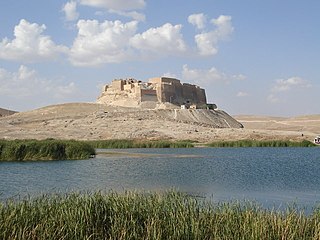
Qal'at Najm is a castle located on the right bank of the Euphrates, near the town of Manbij in north Syria. The castle probably stood on the site of an earlier Roman site and is known from Arabic texts since the 7th century CE. Reconstruction works were carried out in the castle by Nur ad-Din Zangi and Az-Zahir Ghazi during the 12th and early 13th centuries. The castle sits on a mound that is protected by a glacis and houses a palace-bath complex and a mosque.
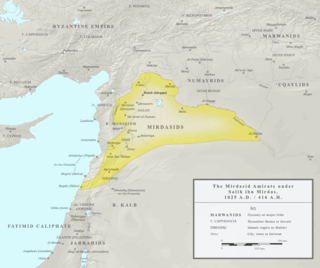
The Mirdasid dynasty, also called the Banu Mirdas, was an Arab dynasty that controlled the Emirate of Aleppo more or less continuously from 1024 until 1080.
Jamal Malik is a Pakistani-born German professor of Islamic Studies and the chair of Religious Studies — Islamic Studies at the University of Erfurt, Germany.
Stefan Weber is a German Orientalist and director of the Museum of Islamic Art at the Pergamon Museum in Berlin, Germany. Previously, he was assistant professor of material history at the Institute for the Study of Muslim Civilisations of Aga Khan University in London.
Georges Nicolas Tamer holds the Chair of Oriental Philology and Islamic Studies at the Friedrich-Alexander-University Erlangen-Nuremberg. Until September 2012, he was professor of Arabic and Islamic studies and the holder of the M.S. Sofia Chair in Arabic Studies at the Ohio State University in Columbus, Ohio. A scholar of religion, philosophy, and Arabic and Islamic literature and culture, his fields of specialization include Qur'anic studies, Arabic philosophy, Christian- and Judeo-Arabic thought, and Islam in modernity. He has previously taught at the Freie Universität Berlin, the University of Erlangen-Nürnberg, and the Central European University.
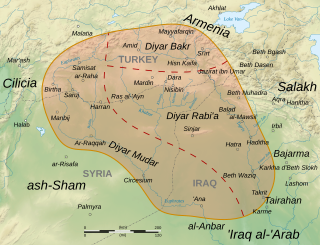
Diyar Mudar is the medieval Arabic name of the westernmost of the three provinces of al-Jazira, the other two being Diyar Bakr and Diyar Rabi'a. According to the medieval geographer al-Baladhuri, all three provinces were named after the main Arab tribes that were settled there by Mu'awiya I in the course of the early Muslim conquests of the 7th century. The Diyar Mudar was settled by the Mudar tribe.
The Samir Shamma Prize for Islamic Numismatics is a bi-annual award for the best book or article in the field of Islamic Numismatics.
Seta Dadoyan is an Armenian scholar who specializes in medieval Armenian political and intellectual history in their interactive aspects with the Near Eastern world. She was a professor of Cultural Studies, Philosophy and Art at the American University of Beirut (AUB) between 1986 and 2005. She has also taught at other universities including the Haigazian University(1981-1986), Columbia University(2002, 2006), St. Nerses Seminary (2007-2010), the University of Chicago(2010) She has written over fifty articles and ten books, and is believed to be the first Armenian woman to have received a Doctor of Sciences in Philosophy focusing on the history of Armenian philosophy. Her scholarly work focuses on medieval Armenian history with a special emphases on the relationship between the Armenians and Muslims; she is considered a leading scholar in this field.
ʿIyāḍ ibn Ghanm ibn Zuhayr al-Fihrī, was an Arab general who played a leading role in the Muslim conquests of al-Jazira and northern Syria. He was among the handful of Qurayshi tribesmen to embrace Islam before the mass conversion of the tribe in 630, and was a companion of the Islamic prophet Muhammad. In 634, under Caliph Abu Bakr, he governed the north Arabian oasis town of Dumat al-Jandal. Later, in 637, he became governor of al-Jazira, but was dismissed by Caliph Umar for alleged improprieties. Afterward, he became a close military aide of his cousin and nephew, Abu Ubayda ibn al-Jarrah, under whose direction Iyad subjected much of Byzantine-held northern Syria, including Aleppo, Manbij and Cyrrhus.

The Museum of Islamic Art is located in the Pergamon Museum and is part of the Staatliche Museen zu Berlin.
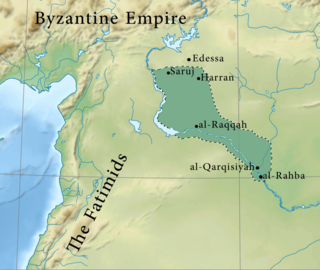
The Numayrids were an Arab dynasty based in Diyar Mudar. They were emirs (princes) of their namesake tribe, the Banu Numayr. The senior branch of the dynasty, founded by Waththab ibn Sabiq in 990, ruled the Euphrates cities of Harran, Saruj and Raqqa more or less continuously until the late 11th century. In the early part of Waththab's reign, the Numayrids also controlled Edessa until the Byzantines conquered it in the early 1030s. In 1062, the Numayrids lost Raqqa to their distant kinsmen and erstwhile allies, the Mirdasids, while by 1081, their capital Harran and nearby Saruj were conquered by the Turkish Seljuks and their Arab Uqaylid allies. Numayrid emirs continued to hold isolated fortresses in Upper Mesopotamia, such as Qal'at an-Najm and Sinn Ibn Utayr near Samosata until the early 12th century, but nothing is heard of them after 1120.
References
- ↑ Universität Hamburg. "Webinar Initiative in Islamic material Culture" . Retrieved 3 December 2018.
- ↑ Universität Hamburg. "The Early Islamic Empire at Work" . Retrieved 10 October 2016.